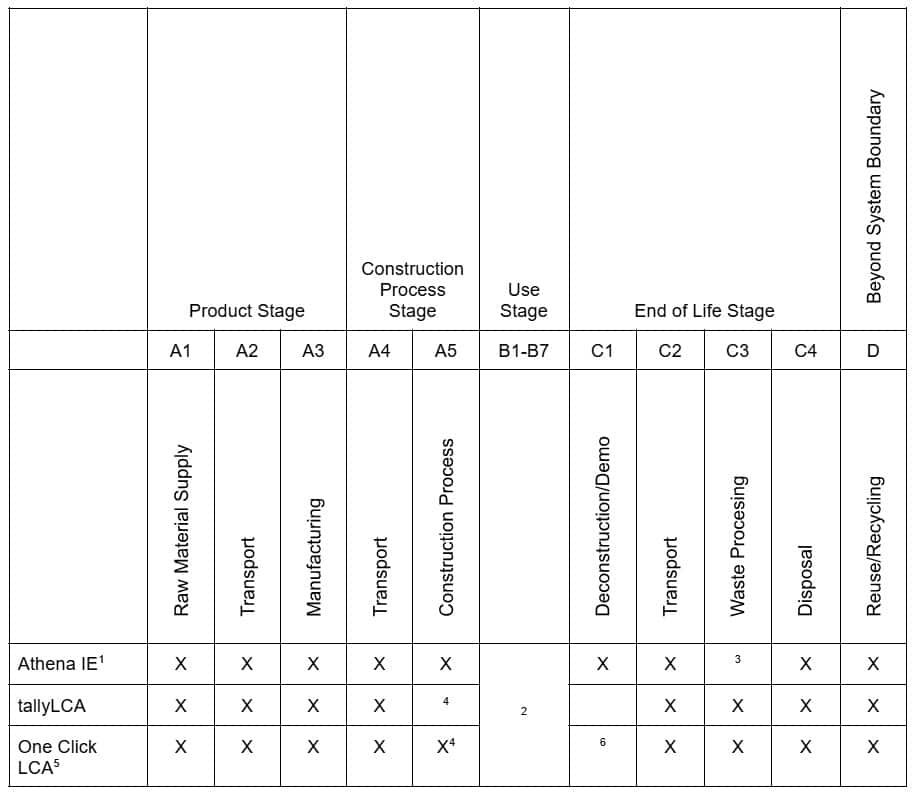8) In December 2023 Athena released a new version of Impact Estimator that changed the biogenic accounting. The information provided in this table is based on the previous version of the software that was used for this ECIDs study and is no longer publicly available. The Woodworks link provided here applies to the new version of Impact Estimator. The figures provided in the table are based on an earlier version of the Woodworks overview.
9) For One Click LCA, the Expert-level license allows the user to adjust the end-of-life scenario from a list of preset options. The information represented in the tables above are the default end-of-life scenarios.
10) University of Oregon Department of Architecture & Environment, Clackamas County Courthouse Life Cycle Assessment of Architectural Concept Designs, August 2020.
11) University of Oregon Department of Architecture & Environment, Clackamas County Courthouse Life Cycle Assessment of Architectural Concept Designs, August 2020.
12) For One Click LCA, the Expert-level license allows the user to adjust the end-of-life scenario from a list of preset options. The information represented in the tables above are the default end-of-life scenarios.


